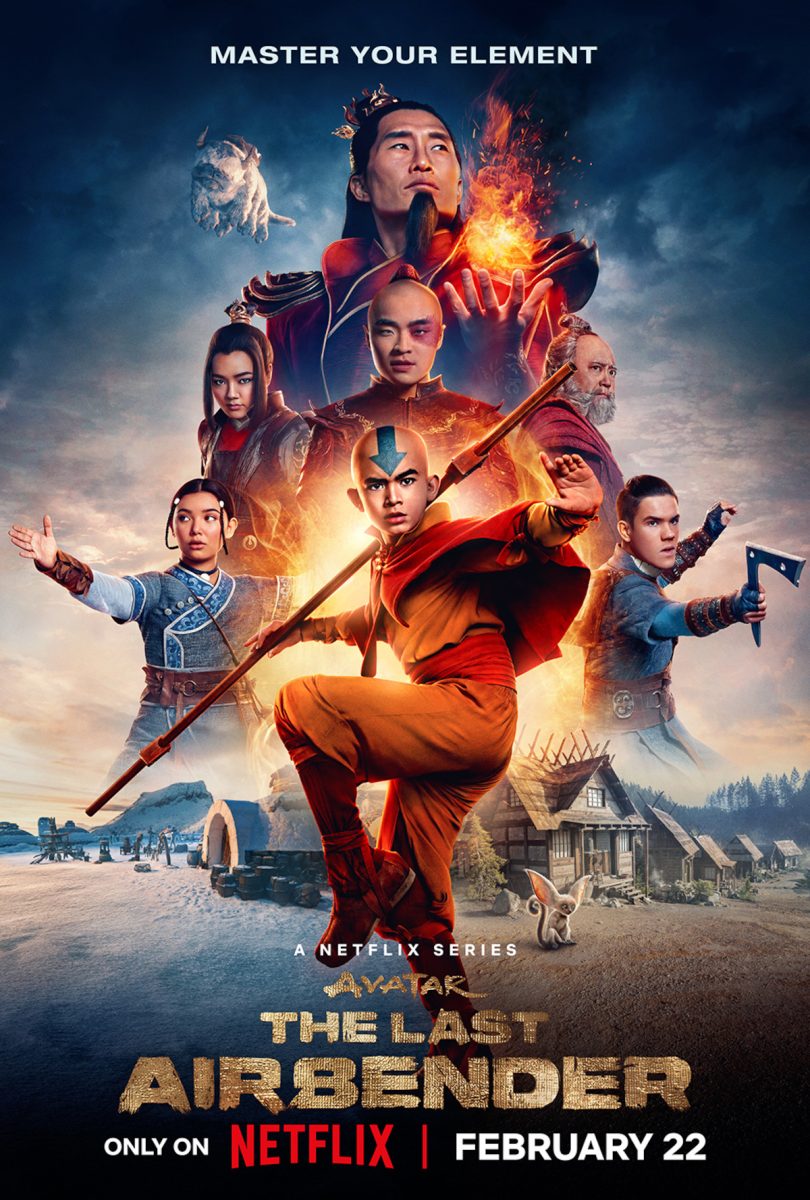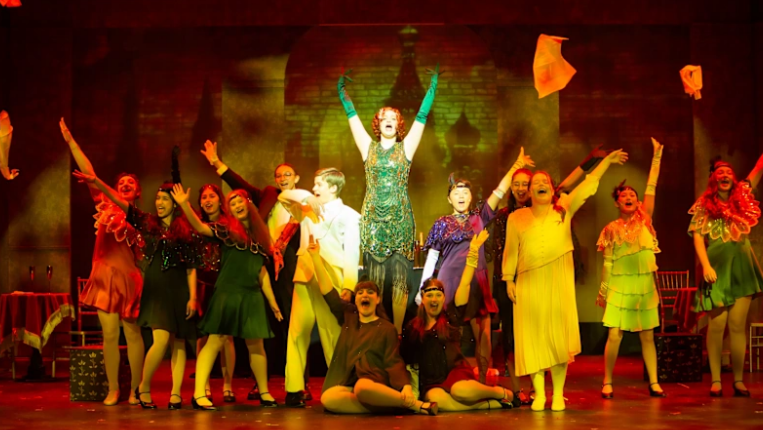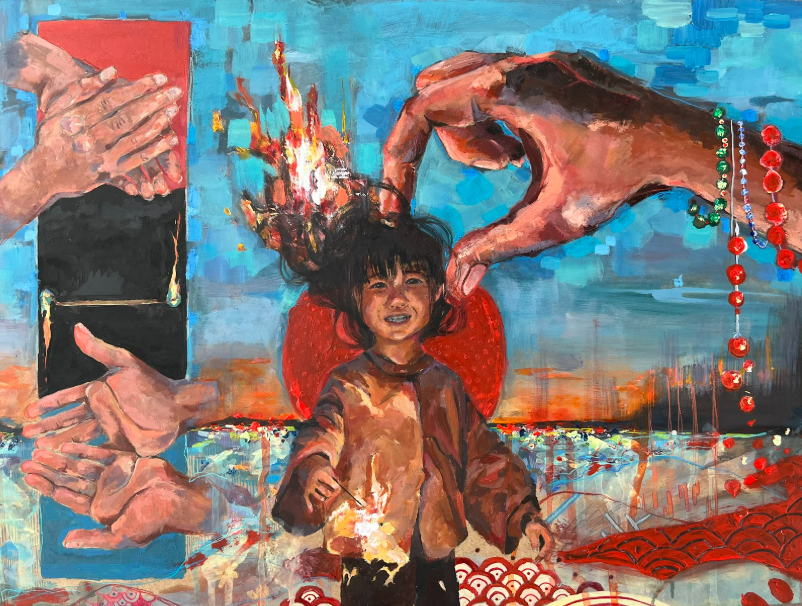“Water. Earth. Fire. Air.”
You may recognize this opening line from Nickelodeon’s critically acclaimed Avatar: The Last Airbender animated series, widely considered one of the greatest shows. From complex characters to dark underlying themes, Avatar manages to capture the hearts of millions worldwide. However, Netflix’s new live-action remake of the beloved cartoon is met with mostly disappointment and criticism.
As a huge fan of the animated series myself, I can’t help but feel underwhelmed, especially after all the hype action, cool computer-generated imagery (CGI), and familiar scenes in the trailers and advertisements. Nonetheless, there are definitely a few aspects of the live-action that I really enjoy. For one, the CGI is incredible; the set is almost completely identical to how I would imagine the cartoons to look in real life. The actors themselves also strongly resemble their fictional counterparts, especially Gordon Cormier as Aang and Kiawentiio Tarbell as Katara. I also appreciate the effort that the actors make in regard to the action scenes: Dallas and Gordon are both trained stunt artists prior to the show and do a great job bringing fight scenes from the cartoon to life. Certainly not an easy feat.

But besides those glowing points, I am vastly disappointed with the rest of the show. I understand that the live-action couldn’t possibly live up to the cartoon with respect to tone, style, and humor, but what I didn’t expect is Netflix unnecessarily modifying the plotline, completely erasing the personalities of the characters, and depicting an underlying misogynistic theme.
In the original cartoon, Avatar takes place in a world of four nations: the Water Tribes, the Earth Kingdom, the Fire Nation, and the Air Nomads, each with the ability to “bend” or manipulate their respective element. For centuries, these civilizations live together in harmony, but when the Fire Nation declares war upon the other nations, the world is thrown into chaos and violence. The only hope is the Avatar, a special being with the ability to harness all four elements, but when the world needs him most, he mysteriously disappears. When the new Avatar, a young Airbender named Aang, returns one hundred years later it’s up to him to master all four elements and defeat the Fire Nation before Sozin’s Comet arrives.
Although the live-action follows this general storyline, many of the nuances within have changed. For example, despite Aang’s entire purpose being to master the four elements, he doesn’t learn any bending in the entire season; in fact, he doesn’t waterbend (one of the four elemental bending arts) even once. In addition, Sozin’s Comet is never mentioned to Aang in the live-action, taking away the entire time limit aspect of the quest and making it seem much lower stakes. Furthermore, the initial plot is altered by combining certain episodes and taking out other ones, pulling some events from later seasons and even the sequel series, and changing the storylines of some iconic episodes for no apparent reason. This unorganized combination of episodes leads to much of the cartoon’s original charm being lost; for example, we only catch a superficial glimpse into the complex character of Jet who, in the original, plays a significant role in shaping Katara’s character arc.
However, what bothers fans the most is the change in the iconic characters of Katara and Sokka. In the animated series, Katara is someone who would go to any length to reach her goals or stand up for what she believes is right; in the cartoon episode Imprisoned, Katara rallies and leads a rebellion of earthbender prisoners to overthrow a Fire Nation prison, and in the episode The Waterbending Master, she challenges Master Pakku to a duel in front of the entire tribe after he refuses to teach her because she is a girl. Despite her unwavering spirit, however, Katara never allows her personal opinions to get in the way of her responsibilities. For example, although Pakku turns her down as a student, she insists that Aang continue learning from him because it is more important for Avatar to learn water bending than for her to. Because of her strong sense of responsibility, Katara is often characterized as the “mother” of Team Avatar.
On the other hand, Netflix Katara is depicted as a quiet and irresponsible girl with big dreams of becoming a warrior, in stark contrast to her spirited, responsible counterpart. To illustrate this difference, let’s take a look at two scenes of the cartoon and the live-action, respectively.
Cartoon:
Sokka: “I knew I should have left you at home. Leave it to a girl to screw things up!”
Katara: “You are the most sexist, immature, nut-brained – ugh, I’m embarrassed to be related to you! Ever since Mom died, I’ve been doing all the work around camp while you’ve been off playing soldier! I even wash all the clothes! Have you ever smelled your dirty socks? Let me tell you, not pleasant!”
Live-Action:
Sokka: “So where were you before? You were waterbending again, weren’t you?”
Katara: “Don’t worry, no one could see me, not that it matters.”
Sokka: “Of course it matters! If the Fire Nation finds out you’re a waterbender… You should be helping out more around the village anyway.”
Katara: “Not everything is about preparing to fight.”
Sokka: “We’re at war.”
Katara: “Waterbending is what built our culture, our way of life. Keeping it alive is our duty.”
Sokka: “Keeping ourselves alive is our duty.”
Katara: “I know that! And if dad were here-”
Sokka: “But he’s not here, I am!”

From this comparison, it is clear that Katara is no longer in the role of a mother; instead, it’s Sokka who acts as a “responsible” father to the village. Instead of Katara taking care of her people while Sokka is “playing soldier,” it is Sokka who protects them while Katara is playing water bender. Taking this role from Katara essentially takes away the majority of her personality from the original cartoon, leaving a husk of a great character behind. “Katara’s rage is central to her character,” Ananya Dhanawade, a junior at Greeley and another Avatar fanatic, comments. “It’s quite literally the genesis for the entire show, as her anger at Sokka’s sexism leads her to, out of pure rage and raw bending talent, crack an entire iceberg nearly in half and free the titular Avatar from a 100-year sleep.”
Sokka himself has his fair share of changes as well. In the original animation, Sokka starts off as a sexist and sarcastic person. However, as he accompanies Aang on his journey, he learns to respect other people and becomes a respectable warrior himself. Throughout the cartoon, we see Sokka’s growth from an arrogant little boy to a respectful, charismatic young man. His ingenuity, leadership, and ability to inspire others enabled him to become the leader of Team Avatar and play a crucial role in the hundred-year war.
In addition, Netflix completely throws Sokka’s development out the window. According to Kiawentiio Tarbell, the actress of Katara, Netflix purposely removes Sokka’s sexist behavior because “there were a lot of moments in the original show that were iffy (Entertainment Weekly).” However, in doing that, they inadvertently express a sexist viewpoint themselves.
The whole Kyoshi Warrior arc demonstrates this clearly. In the animated series, Sokka arrogantly walks into the Kyoshi Warriors’ dojo, apologizing for interrupting their “dance lesson” and attempting to mansplain fighting to them, only to be humiliated when Suki, the leader of the Kyoshi Warriors, easily takes him down. Sokka is then forced to re-evaluate his sexist ideals and beg Suki to teach him, and he is required to wear the Kyoshi traditional makeup and dresses and use fans in combat, a blatantly emasculating experience for him that opens his eyes beyond the traditions of the Water Tribes and begins his development.
On the other hand, in episode 2 of the live-action series, Sokka seems to look up to Suki from the beginning, hoping to become as strong a warrior as she is. Although we still see some emasculation in these scenes, the show then uses the later scenes to build up Sokka’s masculinity instead of addressing where that sense of emasculation comes from. As a result, Sokka’s entire arc has become about him proving to himself that he is indeed the strong, masculine leader he is destined to become from the get-go.
All in all, Netflix’s live-action adaptation of the Avatar: The Last Airbender cartoon series is a major disappointment. In an attempt to avoid criticism, Netflix rewrites the original characters into bland, empty shells of their former selves, resulting in a boring watch that they attempt to fix through even more boring exposition. Despite many fans sharing my sentiment, there are clearly enough enjoyers to convince Netflix to approve seasons 2 and 3 of the live-action series. Although my expectations are significantly lowered, I’m curious to see how the screenwriters can bounce back from this season, if they can at all.





